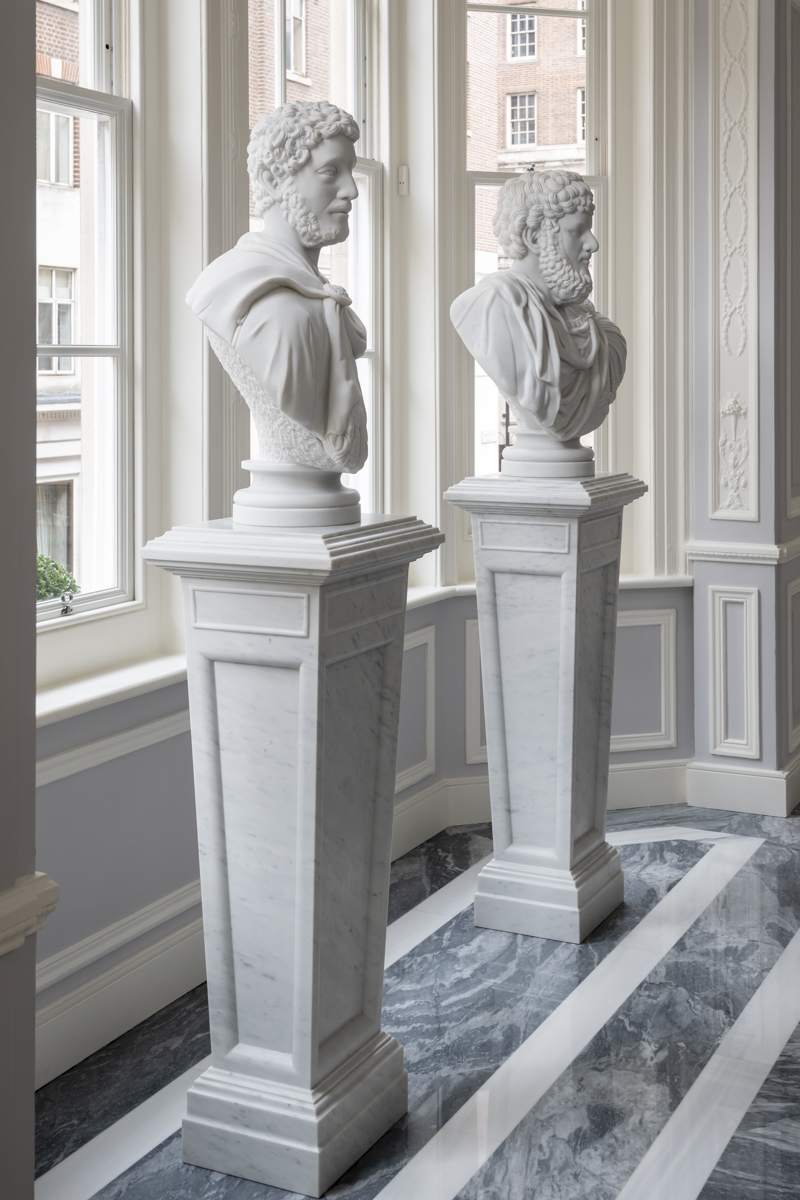The workshop and the master: after all nothing has changed
More than six hundred years have passed since Michelangelo sculpted the statue of David. In those days, the shop boys roughed the block of stone which was then worked and finished by the Master. In our company today, the shop boys have been replaced by technology, but the birth of the true sublime work remains the privilege of the Master alone.
Choose, invent, design a natural stone product
If the subject is a classical statue, a preliminary study is carried out on the artistic and aesthetic canons of the period.
To create an artifact in natural stone, the subject is first chosen together with the client, the architect or the designer: this can vary from an existing work, classic or modern, to the one designed from scratch.
Then there is the study of the material to be used which, usually, is performed on light marbles such as Carrara, Calacatta or Bianco Lasa or on native stones such as Istrian stone.
Once the subject and the material have been chosen, we proceed with the selection of a three-dimensional model (sent by the customer, purchased on special websites or designed internally) and the proportioning of the same according to the chosen measures.

The first steps to free the sculpture from stone
"I saw an angel in the marble and I carved until I freed it."
Michelangelo
Once the stone and the ideal block have been chosen, the first roughing is carried out by a machine guided by a CAD CAM software that also sets the various tools to be used, from discs of various sizes to round burglary cutters of various diameters.
With the help of diamond cutters, the surplus of material left by the milling cutter is eliminated and the figure begins to appear with the use of the Wibia tip.
If the subject requests it, before proceeding, a copy is made in gasbeton or honeycomb cement to have a better visualization of the volumes and the play of chiaroscuro.

The dialogue between the stone and the figure, between the soul and the Master
At this point there is a block of stone, with the rough-hewn figure.
In front, there is the Master with his tools that are the same as always: the bribe, the chisel, the tips that he himself has tempered with fire before starting.
Even now, the Master personally tempers his instruments as he once did: he makes them glowing on the fire and then beats them with the hammer on the anvil.
There are also cutters, instruments borrowed from the world of dentistry to finish the smallest details and abrasive papers with different grain sizes: always and in any case, they are manual tools.
His hands listen to the studies made on the artifact and materials before starting with the project and are guided by experience and determination. They work slowly but incessantly, entering every little crevice, taking care of the linearity of the figure, the chiaroscuro, the perfection in the surface.
They will not stop for a long time, returning to the same detail, retouching, filing, observing.
The 'violin chord drill' was used by Michelangelo to sculpt the David and especially his curls: no other instrument could have given him the incredible strength of detail and depth.
The client and the Master: the idea takes shape, slowly
The abrasive papers of various grain sizes, used with water, allow precise finishes and give the surface a velvety materiality.
Throughout the finishing process, the Master is always in contact with the client so that the figure takes shape exactly following the idea that originated it.
The chiaroscuro, the details, the sanding of the stone... The exchange of information is a continuous flow, a search for sensation and balance to let creativity shape the material and free what man has dreamed of.

